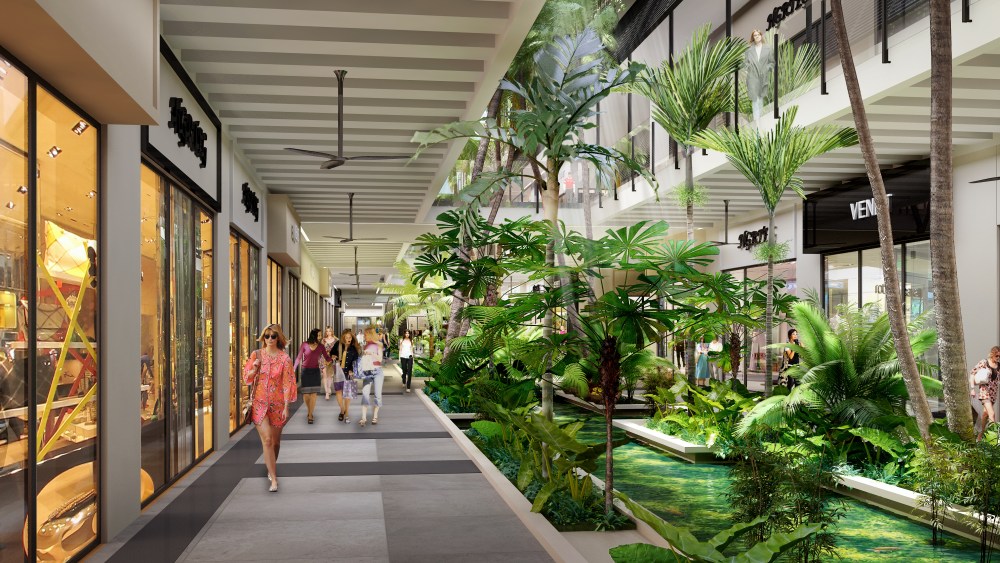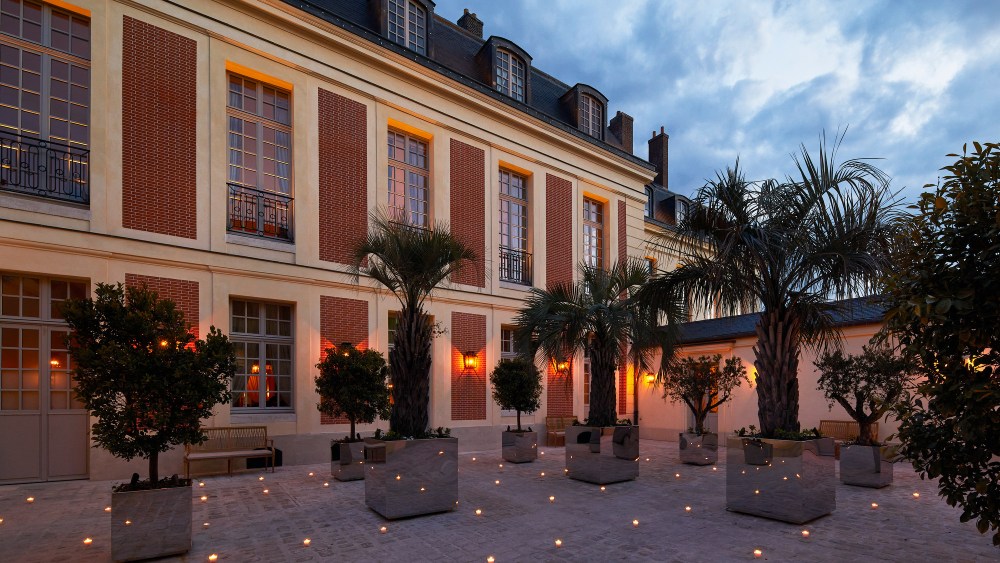Through its 60 years in business, there’s been an “unrelenting” focus on luxury along with an appetite for growth and new development at Bal Harbour Shops.
In the third quarter next year, Bal Harbour Shops will cut the ribbon on a major retail expansion that’s been long in the making. And last year, the center revealed a grand transformation plan to develop market rate and affordable housing and a five-star hotel, adding to its large retail expansion and ultimately creating a “village center.” Though construction on the mixed-use project is still years away, the plan suggests a bright future for Bal Harbour Shops.
“There are older shopping centers, of course, but in 2025 not many of them are still owned by their founding families,” said Matthew Whitman Lazenby, president and chief executive officer of Whitman Family Development, the owners of Bal Harbour Shops. “We’re a generational business, which is part of the reason why, humility aside, we’ve had so much success over 60 years.”
You May Also Like
Then there’s the approach to luxury. “It’s right there in our mission statement. Luxury demands a long-term outlook,” Lazenby said. “We are unrelenting in our focus on the long term.”

On Wednesday, Bal Harbour Shops, located at 9700 Collins Avenue in the northern tip of Miami Beach, celebrated its 60th anniversary with a black-tie party for nearly 1,000 guests. “Sixty years is an occasion to look backward and consider how we got here, but where we’re going is, frankly, way more exciting than where we’ve been,” Lazenby said. “We continue to innovate, build and grow. And the future, despite the waters that we’re wading through right now with everyone else [facing weakness in luxury], looks bright for the long term.”
Lazenby is the grandson of the late Stanley Finch Whitman, the visionary developer and owner of Bal Harbour Shops which he opened in 1965 on the site of a former World War II barracks. He saw the potential in luxury long before the rest of the shopping-center industry and came up with the concept of bringing the tony retailers of Fifth Avenue to Miami Beach and creating a lush, tropical, open-air setting for them with upscale restaurants, palm trees, valet parking, concierge and other amenities. He foresaw that Miami as a tourist mecca would only grow, and that tourism and luxury would be a potent combination.
Before joining his family’s firm, Lazenby was employed by Robert K. Futterman & Associates retail leasing and consulting. Later he became a leasing agent for The Taubman Company, once a family-run real estate business, now entirely owned by Simon, the nation’s largest shopping center developer.
When he first joined his family firm in 2003, Lazenby worked for his grandfather and his uncle, Randall Whitman, a former managing partner. “I got the coffee,” Lazenby said, half jokingly. “I was there to lap up knowledge.” He became an assistant leasing agent, then director of leasing and general partner, an operating partner, and in 2013, president and CEO of Whitman Family Development.
In a recent interview, Lazenby was candid about the state of his business and the luxury sector, and the challenges expanding Bal Harbour Shops amid community opposition.
He said specialty stores in the center were down about 4 percent for September, but for the year, up 9 to 10 percent. Among the luxury shops in the center are Loro Piana, Chopard, Gucci, Salvatore Ferragamo, Alexander McQueen, Balenciaga, Brioni, Chanel, Dolce & Gabbana, Fendi, Goyard, Harry Winston, Prada, Richard Mille, Van Cleef & Arpels and Versace. Restaurants include Makoto, Avenue 31 Café, Carrie’s at Neiman Marcus, Carpaccio and Hillstone.
The two anchor stores — Neiman Marcus and Saks Fifth Avenue — combined were down 26 percent in September, and down 6 percent over the last 12 months.
Lazenby characterized the climate for selling luxury as “a little bit tempestuous at the moment, but retailers I speak to remain cautiously optimistic the fourth quarter will be better than the third. I was in the shopping center today, and there were people and shopping bags. It looked good. We’ll see what happens.”
Discussions regarding rent relief for tenants crescendoed during the pandemic, but since then, only a handful of tenants say they want help. There’s ongoing litigation with Saks Fifth Avenue over differences regarding what Saks felt it owed the center for rent through the pandemic. While both parties await a judgment, Saks pays rent into a court escrow account.
The expansion, in the works for decades yet delayed by community opposition, entitlements, the pandemic and adjustments to the plan, will add 200,000 square feet of retail space, bringing total square footage to approximately 600,000 square feet.
The expansion will house 18 existing tenants relocating to “right-size” their space, including Akris, Isaia, Graff, Bottega Veneta, Zegna, Zimmermann, The Webster, David Yurman and Etro. It will also house retailers coming to Bal Harbour Shops for the first time, such as L’Agence, Toteme and Peserico, and others who left Bal Harbour Shops and are returning. With several brands relocating to the expansion, others in older sections such as Prada, Balenciaga, Saint Laurent and Brioni, will be able to enlarge their shops. In addition, several restaurants will open including Starr Steakhouse and China Grill.
“Bal Harbour Shops for 60 years has been a very intimate, scaled experience very easy to navigate. It was important to my grandfather, my uncle and myself that we didn’t deviate from that.” Despite some different views on how to do it, it was unanimous nobody wanted the expansion to feel like a wing.
“Our DNA is so firmly rooted in everything we provide — the lush, tropical landscaping, the sound of moving water, putting people at ease, just all those things that make you feel good,” Lazenby said. “We don’t plan to change that formula. Our objective for 60 years has been trying to foster and build an emotional connection with our customer, to create a space that matters to them.”

Completing the expansion took much longer than expected. “Every real estate development has its issues,” Lazenby said. “Sometimes it’s financing. Sometimes it’s leasing. Sometimes it’s marketing. Those were not our issues. Ours were entirely political/entitlements. We live and work in a very mature community. The village is like 80 years old. My grandfather was one of the original incorporators of the Village of Bal Harbour. Unfortunately, in a lot of mature communities, there’s very strong anti-development sentiment. It’s hard to overcome. It took us about 10 years from submitting the plans to getting the approval in 2017 for the expansion.” Lazenby won’t disclose the cost of the project, though a $740 million loan for it was obtained.
Complicating matters was $100 million in mitigation fees Bal Harbour Shops had to pay for permission to proceed with the expansion. The center subsequently filed a complaint in court arguing the fees were unlawful. A ruling is still forthcoming.
Plans for the mixed-use development, originally Stanley Whitman’s vision, has also been met with “fierce local opposition,” Lazenby said. “People are uncomfortable with change.”
Community opposition aside, “It’s hard to imagine anyone living in the Village of Bal Harbour who has never been to Bal Harbour Shops with some frequency,” said Lazenby, noting the village has a population of just 2,800.
Asked how many people visit Bal Harbour Shops on average annually, Lazenby quotes his grandfather. “He would always say to prospective tenants who were concerned about that, ‘If you want to see people, go to China.’ We don’t brag about getting tons and tons of traffic. That’s not really who we’ve ever been. We get the most qualified customers here to buy and buy with a vengeance. We don’t even track foot fall. All we track are cars” and that’s tracking at about a million annually, including parked cars as well as Ubers and Lyfts dropping off visitors. The customer base is diverse, from all over the U.S. and the world. “Latin America is obviously a critically important market for us, but markets like Russia and the Slavic region are building an importance. What the war [in Ukraine] has done remains to be seen.”
Bal Harbour Shops launched with one level. The anchors came next on two levels Neiman’s first, Saks second. In the 1980s, a third level was added on one side of the center, which in the last 10 years or so converted to restaurant use from storage and offices. The center has been highly productive, ranging from $2,000 to up to $3,000 in peak years.
In 1965, Bal Harbour Shops housed a Schrafft’s restaurant. “My grandfather was way ahead of his time. No one did restaurant deals in the ’60s because they couldn’t pay any rent,” Lazenby said. “Now we’ve got restaurants doing in excess of $30 million, probably soon to be $40 million. I would argue, as department stores become less relevant, and not producing the types of volumes they used to, we see the food and beverage kind of replacing them as traffic generators.”
Business at Bal Harbour Shops is still mostly seasonal, but it’s way less seasonal than it used to be, Lazenby said. “It pretty much used to be that Thanksgiving to Easter stretch when 90 percent of our business was done. Construction on new stores or renovations was prohibited during that window. But we don’t do that anymore because there are no bad months anymore in the Miami market.
“All we’re doing is selling people stuff they don’t really need, but also creating an experience that puts a smile on your face, and takes away whatever may be causing angst in your life. It’s about celebrating moments shared with friends and family. That’s what we’re trying to do.”



